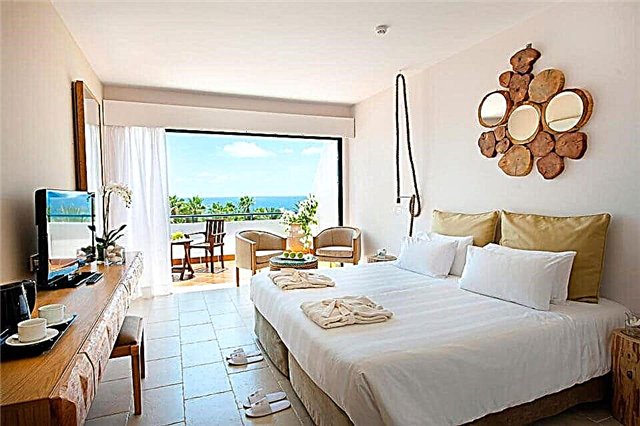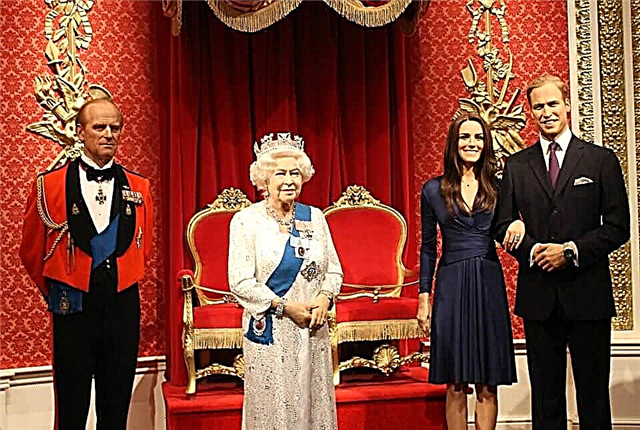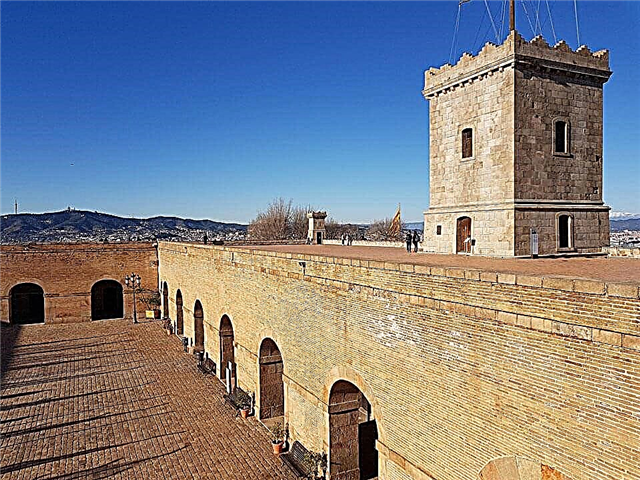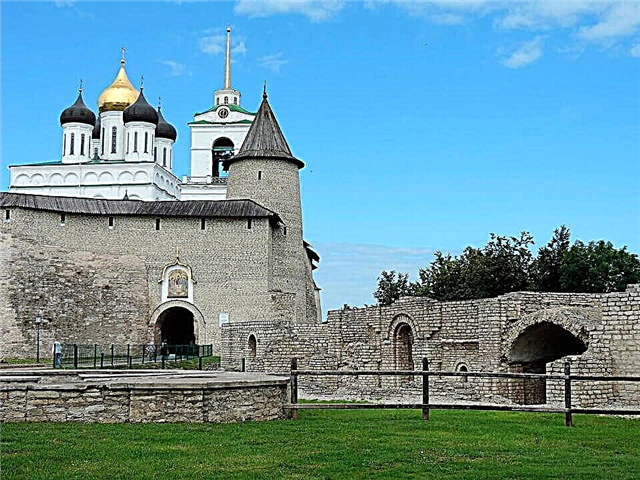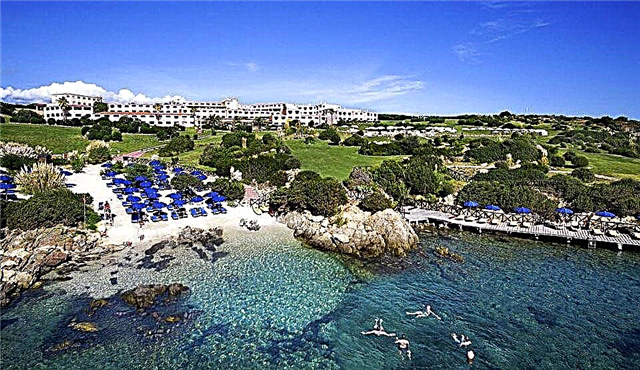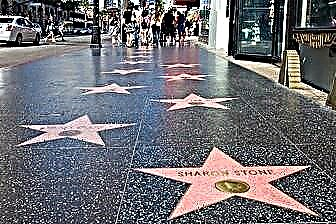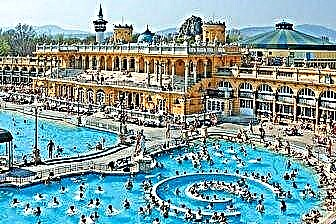Budapest traces its history back to the times of the Roman Empire. In the 1st century it was the administrative center of Aquincum, then with the arrival of the Magyars (the self-name of the Hungarian people) in the 9th century the city was renamed Obuda. On the opposite bank of the Danube, along with Obuda, there was a settlement Pest. Later, under the Hapsburgs in the 17th-19th centuries, the united Budapest became one of the most brilliant European capitals.
Modern Budapest has retained its former splendor as an imperial city. The majestic and unusual Parliament building, Gothic basilicas and baroque quarters are always full of tourists. The Hungarian capital is a place for informative excursion tourism, for recreation in the famous thermal baths, as well as for acquaintance with hearty Hungarian cuisine and delicious Tokaj wine.

The best hotels and hotels at affordable prices.
from 500 rubles / day
What to see and where to go in Budapest?
The most interesting and beautiful places for walking. Photos and a short description.
Hungarian parliament building
Parliament is a real architectural masterpiece that adorns the right bank of the Danube, a recognized visiting card of the capital. The building was built in the neo-Gothic style, its facade is decorated with numerous arches, towers, "flying" spans. The interiors are luxurious and pompous. The building is one of the most visited tourist attractions in Budapest.

Szechenyi chain bridge
Suspension bridge over the Danube river connecting the two parts of the city. It was designed by the English architect W.T. Clarke in 1849. After World War II, the bridge was rebuilt with donations from the townspeople. The structure is 380 meters long and 14.8 meters wide. The bridge offers a spectacular view of Budapest, where you can take a lot of good photos. In the evenings, an elegant lighting turns on.

Buda Castle
A fortress with reliable walls that guarded the ancient capital of Buda in the past. The Buda fortress has existed since the 13th century, it was built to protect against the raids of the Mongol Tatars at the behest of King Bel IV. Inside the fort, a royal castle and three churches were erected (St. Nicholas, Mary Magdalene, Virgin Mary). Under King Sigismund, the castle of the New Palace with a spacious knight's hall for tournaments appeared in the fortress.

Fisherman's Bastion
The building is located in the old city district of Var on the Fortress Hill. Until 1905, a fishing market was located on this site. The construction of the bastion was planned to coincide with the celebration of the millennium of the Hungarian state in 1897, but the work was completed only a few years later. The Fisherman's Bastion is a white stone architectural ensemble with seven towers that symbolize the seven Hungarian tribes.

Basilica of St. Stephen (St. Stephen)
The largest Catholic church in Budapest, 96 meters high. This monumental cathedral was built for several decades, and only in 1905 it was consecrated. The basilica was built in the neo-Gothic style - a large domed hall, two symmetrical bell towers on the sides and a large arched central entrance, decorated with inscriptions and columns. The relics of Saint Stephen, revered by all Hungarians, are kept inside.

Matthias Church
Officially, the temple bears the name of the Virgin Mary, but the inhabitants of the capital call it in honor of the Hungarian king Matthias Corvinus. For Budapest, the architecture of the temple is quite unusual, as it is dominated by elements of the Gothic. The church regularly hosts musical evenings, where you can listen to organ, violin, choral singing. The first church on the site of a modern temple appeared in the 11th century at the behest of Prince Istvan.

Great synagogue
One of the largest Jewish temples in Europe, located in the Jewish quarter of Budapest. The area of the synagogue is 1200 m², the capacity is up to 3 thousand people. The Jewish Museum is located in the courtyard. The synagogue was built in the Byzantine style with some oriental elements; the interior decoration resembles the interiors of Catholic cathedrals. During the Second World War, the building was looted. A complete recovery took place in the 90s. XX century.

Heroes Square
The square is located on the central Andrassy Avenue. There are two art museums in Budapest, as well as the Monument to the Millennium of the Beginning of the Hungarian State (a 36-meter column topped with a statue of the Archangel Gabriel). Previously, sculptures of rulers from the Habsburg dynasty stood on the square, which were replaced by the statues of Hungarian kings under the communist government.

Hungarian opera house
The famous Budapest Opera, almost the twin sister of the Vienna Opera. Both theaters were cultural centers of the Austro-Hungarian Empire during the Habsburg era. The theater was opened in 1884, the premiere performance was attended by Emperor Franz Joseph, who was amazed by the interior decoration of the halls. The first years of the opera were directed by the composer Ferenc Erkel, later he was replaced by the famous Gustav Mahler.

Hungarian National Gallery
The museum is located on the territory of the Royal Palace of the Buda Fortress. The gallery is famous for exhibiting works by Hungarian artists (or works created in Hungary) in its halls. The gallery displays more than 100 thousand works of art created over several centuries. Several exhibitions are open on 4 floors: stone and wood sculpture, medieval paintings, canvases from later eras up to the 20th century.

Art Museum
The main art museum of the Hungarian capital on Heroes' Square, where the largest collection of famous painters is exhibited. Among the paintings are the creations of Raphael, da Vinci, Manet, Goya, Velazquez, Rubens, El Greco. There are also samples of ancient Egyptian and ancient culture. The museum was opened in 1906, the basis of the exposition was the private collection of the princes of Esterhazy.

House of Terror
The museum, created in the early 2000s. with the support of the government of V. Orban. The main purpose of the exhibitions is to show the period in the history of Hungary in the XX century, when the country was under the control of the communist government (supported by the leadership of the USSR) The place is ambiguous, since many facts from the "totalitarian past" of the country are exaggerated and distorted. It is believed that the museum was created for propaganda purposes.

Danube embankment shoes
An original and touching monument to the Jews who were shot on the embankment during the Second World War. The executions were carried out by functionaries of the Hungarian Nazi Party. There are many pairs of shoes of different sizes on the stone pavement, including children's shoes. There is also a bench with memorial tables, where the names of people who suffered from the massacre are immortalized.

Central market
Shopping arcade on Fovam square, where you can find original Hungarian souvenirs or typical national products. The market building is decorated with a colored ceramic roof. The site was renovated in the 1990s. after numerous damages during the war. The market quickly gained popularity among tourists who go here for memorable purchases and fresh food.

Széchenyi Bath
The largest bathing complex in Europe, opened in 1913. Healing water is supplied to the pools from a depth of more than 1200 meters from a hot well and several small cold wells. In addition to bathing in healing water, the Széchenyi complex provides a number of additional services: sauna, water gymnastics, gym, wellness and so on. All this is included in the entrance ticket price.

Gellert Bath
According to local legend, the bathhouse appeared in the 13th century, and King Andras II took baths in its waters. By his will, the first hospital was built. After the capture of Buda by the Ottomans, Turkish baths were erected on the site of the springs. Gellert opened to the public in the 19th century, but it was not popular and received the nickname "The Muddy Barn". But the situation changed when the modern building of the bathhouse appeared during the reign of Emperor Franz Joseph.

Mount Gellert
A hill in the territory of Budapest, named after St. Gellert, the patron saint of the city. In the 11th century, pagans threw a missionary from this mountain, protesting against his Christian sermons. Gellert was previously put in a barrel with sharp nails. There is a monument to the holy martyr on the slope of the mountain. Inside the mountain there is a large reservoir and an astronomical observatory created in the 19th century.

Aquincum
Archaeological Museum Park Budapest, which is the ruins of the ancient Roman city of Aquincum - the center of the province of Pannonia. Remains of antique amphitheaters, some sculptures and crypts are well preserved. On the territory of the park there is a museum built in the 19th century, where unique exhibits are kept: jewelry, coins, household items, dishes. There is even a rare aquatic organ created in the 3rd century.

Andrássy Avenue
The avenue is the main street of the Hungarian capital and is considered one of the most beautiful European avenues. Locals and tourists alike call it the "Champs Elysees of Budapest". Many attractions are concentrated here: the Hungarian Opera, the memorial museums of Hungarian composers, the State Puppet Theater and others. Andrássy Avenue was included in the UNESCO heritage list in 2002.

Margaret Island
A natural island on the Danube River, it used to be called Hare Island. According to legend, King Bela IV turned with a prayer to God to help him cope with the Tatar-Mongols, and in return promised to give his daughter Margarita as a nun. God helped the king, and the girl went to the hare island in the Dominican monastery. After her death, Margaret was canonized, and the island received her name.

Varoshliget Park
A landscaped city park on the site of former hunting grounds and pastures, created at the end of the 18th century. The place is very popular for walking among the residents of Budapest. Several thousand trees grow in the park, there are artificial lakes and canals. On the territory there are zoological and botanical gardens, as well as several popular city attractions: the Széchenyi bath, a zoo, Vaidahunyad castle, a circus.

Vaidahunyad Castle
Originally made of wood for the celebration of the millennium of the Hungarians' finding of their homeland, people liked the castle so much that it was later built of stone. Vaidahunyad is located in Varoshliget Park and many tourists walking here think that this is an ancient fortification where the Hungarian kings lived. There is also a real Vaidahunyad in Transylvania in Romania.

Brunswick Castle
The famous castle is 30 km away. from Budapest, built in the neo-gothic style. The territory of the park around the castle is designed in the best traditions of English landscape art. The palace is closely connected with the personality of Ludwik van Beethoven, who had many years of friendship with the Brunswick family. There is a memorial museum of the composer, concerts are often held and films about his life and work are shown.

Budapest Zoo
City zoo in the Varoshliget park. It contains about 3 thousand animals, including representatives of exotic continents. Of interest are the oceanarium, the palm pavilion and the butterfly house. There is also a Hungarian ethno-village in the zoo where domestic animals live. The animals can not only be watched, but also fed at certain times. It is necessary to spend at least 3 hours to visit the zoo.

Danube river
Waterway of Europe, crossing several countries. Divides Budapest into two parts, which are connected by picturesque suspension bridges. In the warm season, tourists are popular for river walks along the Danube and visiting numerous islands: Chepel, Nepsyget, Margit, Hayodyari siget. In addition to tourist ships, public ships run along the river, which can be accessed with a city pass.


